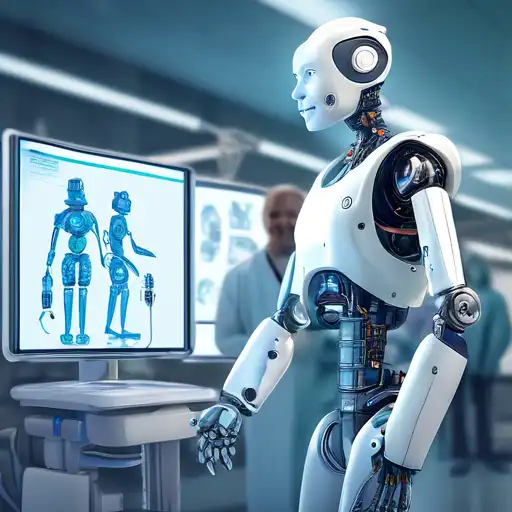Introduction to Robotics in Healthcare
The integration of robotics into healthcare is revolutionizing the way medical procedures are performed, offering unprecedented precision, efficiency, and outcomes. From surgical robots to rehabilitation robotics, the potential to enhance patient care is immense. This article explores the transformative impact of robotics in healthcare, highlighting key innovations and their benefits.
Surgical Robotics: Precision and Minimally Invasive Procedures
One of the most significant advancements in healthcare robotics is the development of surgical robots. These sophisticated machines enable surgeons to perform complex procedures with greater precision, flexibility, and control than conventional techniques. Minimally invasive surgeries, facilitated by robotics, result in smaller incisions, reduced pain, and quicker recovery times for patients.
Rehabilitation Robotics: Aiding Recovery and Mobility
Rehabilitation robotics are playing a pivotal role in helping patients regain mobility and strength after injuries or strokes. Devices such as exoskeletons and robotic prosthetics are not only improving the quality of life for individuals but are also setting new standards in physical therapy and rehabilitation.
Robotic Assistance in Daily Healthcare Tasks
Beyond surgery and rehabilitation, robots are assisting in daily healthcare tasks, including medication dispensing, patient monitoring, and even companionship for the elderly. These applications are reducing the workload on healthcare professionals, allowing them to focus more on patient care.
The Benefits of Robotics in Healthcare
The adoption of robotics in healthcare brings numerous benefits, including:
- Enhanced precision and accuracy in medical procedures
- Reduced recovery times and hospital stays
- Lower risk of infections and complications
- Increased accessibility to high-quality care
These advantages underscore the potential of robotics to not only improve patient outcomes but also to make healthcare more efficient and cost-effective.
Challenges and Future Directions
Despite the promising benefits, the integration of robotics into healthcare faces challenges, such as high costs and the need for specialized training. However, ongoing advancements in technology and increasing adoption rates suggest a bright future for robotics in healthcare. Innovations such as AI-driven diagnostics and robotic telemedicine are on the horizon, promising to further transform the sector.
Conclusion
Robotics in healthcare is undeniably a game changer, offering solutions that were once considered futuristic. As technology continues to evolve, the potential for robotics to enhance every aspect of healthcare is limitless. Embracing these innovations will be key to addressing the challenges of modern healthcare and improving patient care worldwide.
